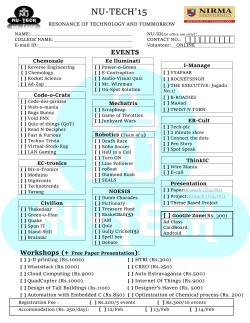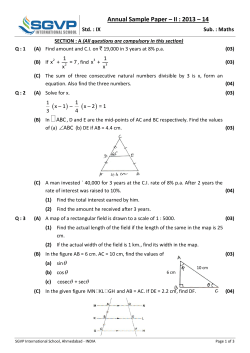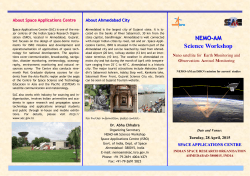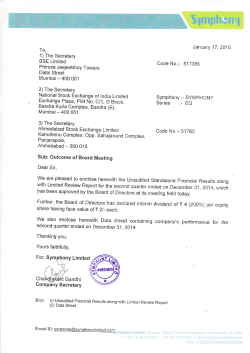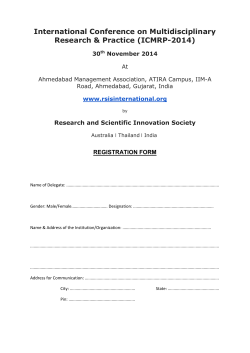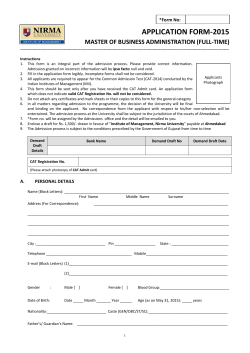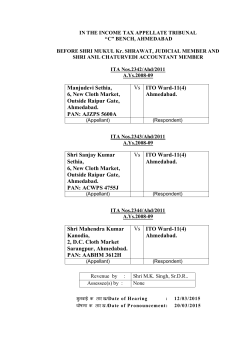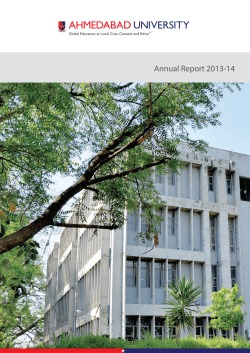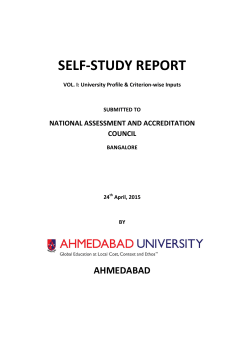
Planned densification
. ~ SUr'!DAY. FEBRUARY 8. 2015 ~ HOUSING FOR HLh Planned densification is the solution Planned densification is a tool to manage the growing urban sprawl in Ahmedabad nIndia, the process of urbanisation started since independence, due to the adoption of mixed system of economy by the country which gave rise to the development of private sector. Urbanisation is population shift from rural to urban areas and in current context, because of development of service sector, the shift of qualified manpower to inter cities. According to a survey by UN State of the World Population report in 2007, by 2030, 40.76 per cent of country's population is expected to reside lin urban areas. The 'quality of life' is the idea behind the large population influx towards the cities. In such a scenario, the need for urban planning and the role of urban planners is gaining acceptance day by day. As cities are growing, the challenges are also getting bigger and tedious in nature. So, planned densification is a tool to manage growing urban sprawls. I DEFINING DENSIFICATION URBAN SPRAWL ( t r I AND Densification simply means making more efficient use of our limited urban space, in other words, finding place for more people to live and work. Urban density is a term used in urban planning and urban design to refer to the number of people inhabiting a given urbanised area. As such, it is to be distinguished from other measures of population density. Urban sprawl is a threat to the long-term sustain- zs ~~ ~. ...... z ~. ;:, . ...__._" ..... JII.. ~ : 0: 1:5 5:' ab ty. grows outwards, good OUICH BYTE agricultural land is destroyed, along with TH E EMPHASIS valuable biodiversity IS GIVEN ON and natural areas. A VERTICAL sprawling city also DEVElOPMENT RATHER THAN means long travel distances to work as well EXPANDING as places of education, CITY recreation and other HORIZONTALLY services. In such a scenario, planned densification offers more housing choices and accommodates different kinds oflliestyles. FOR PLANNED DENSIFICATION AND URBAN SPRAWL OF AHMEDABAD Today, Ahmedabad's population is six million plus and as per the estimate, considering scientific population projection methods by Ahmedabad Urban DevelopmentAuthority (AUDA), the city is ready to strike the population figure of eight million plus after ten years. Considering the above mentio ned parameters and vision of central government of making Smart Cities, the zoning is finally done in Development Plan, 2021 of Ahmedabad which consists of Rl, R2, R3 zones, CBD area, R-AH zone, Industrial and Agriculture zone etc. -The emphasis is given on compact city form by vertical development and opting for transit-oriented development rather than expanding city horiz-ontally. Also emphasis is given to redevelopment of existing areas. Green cover is also must and to increase green cover, agriculture zone is proposed in more than 50 per cent of the area. The main feature of Development Plan, 2021 of Ahmedabad is R-AH (affordable housing zone), to cater to the housing need of LIG and MIG. In the 'Land Use' plan, in the Development Plan, the zones clearly mark the areas with appropriate density. Areas demarcated in particular zone are based on the future required segmental housing needs of the city. This can definitely ensure availability of ample housing stock across all tile segments of society. -Anushrav Bhatt (Writer is a city-based housing planner and property analyst) , IJ ., C ~ ! ) s II
© Copyright 2025
